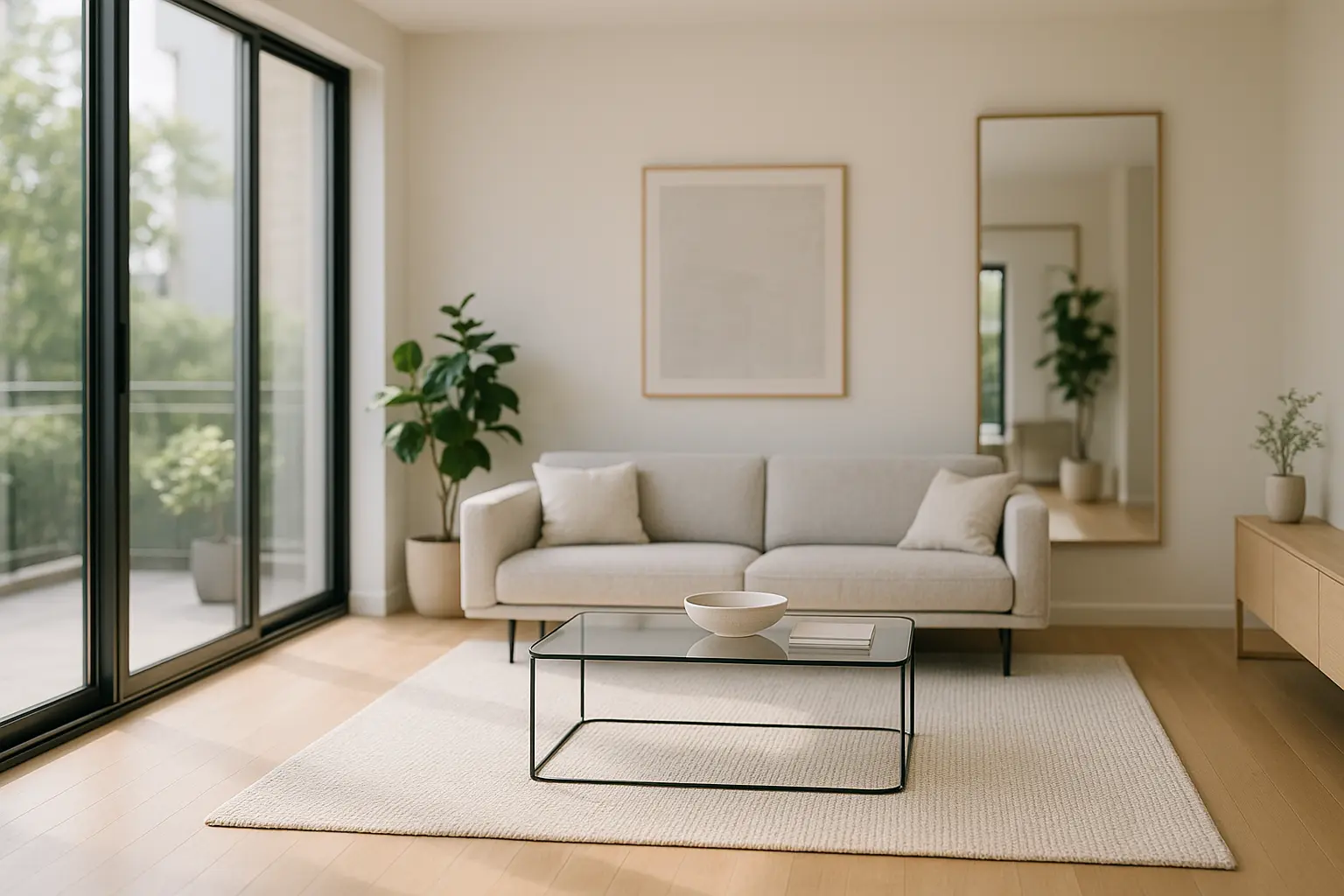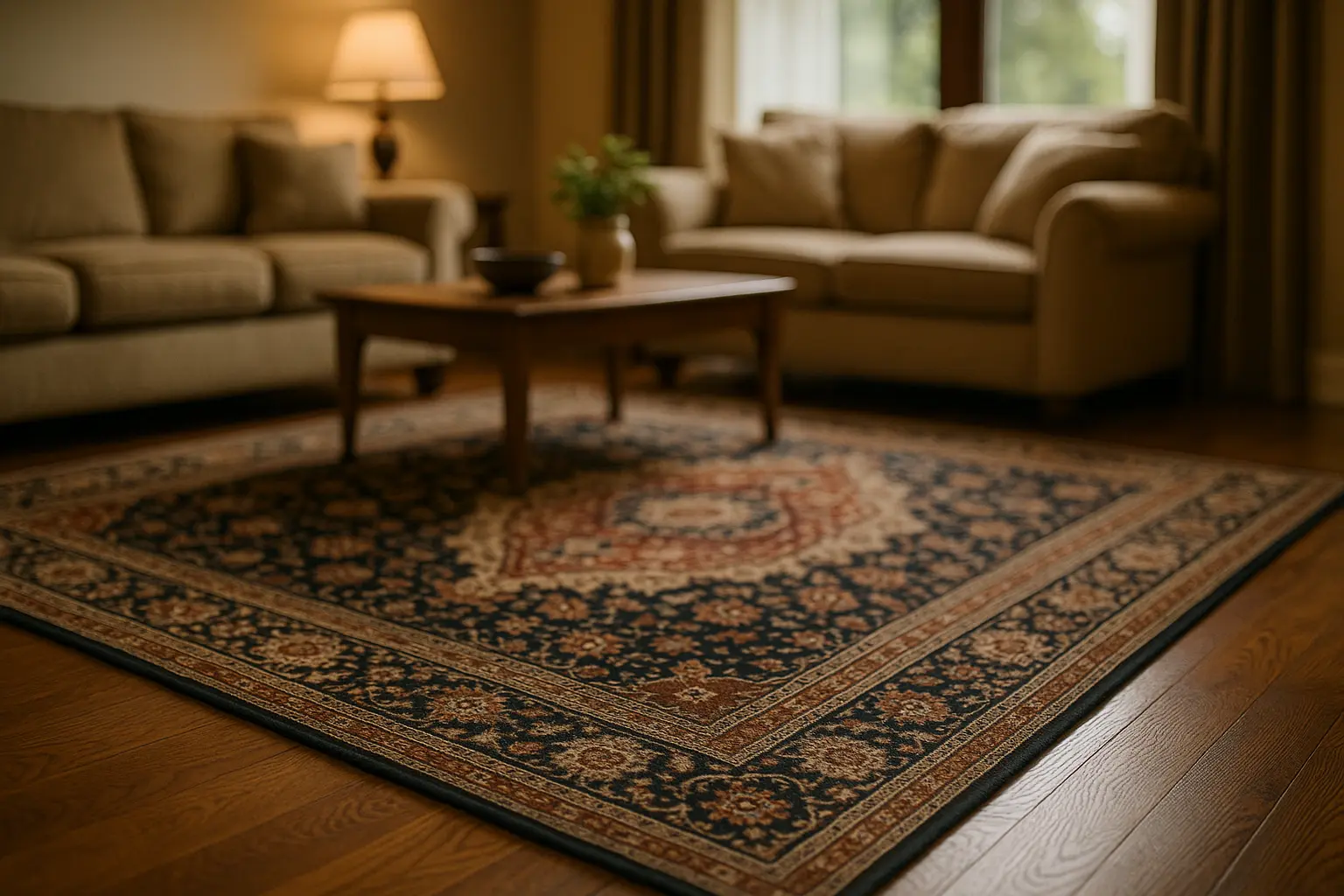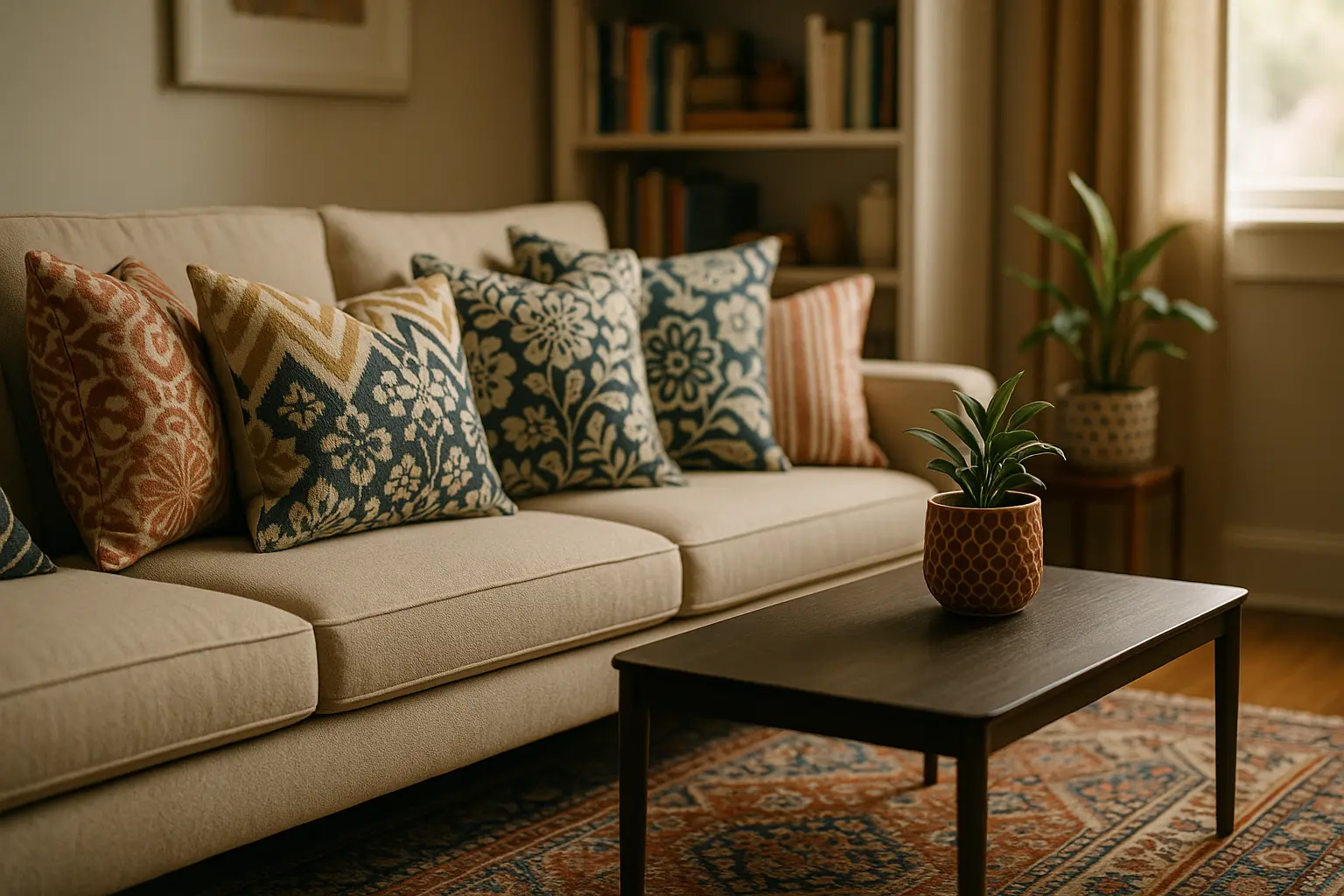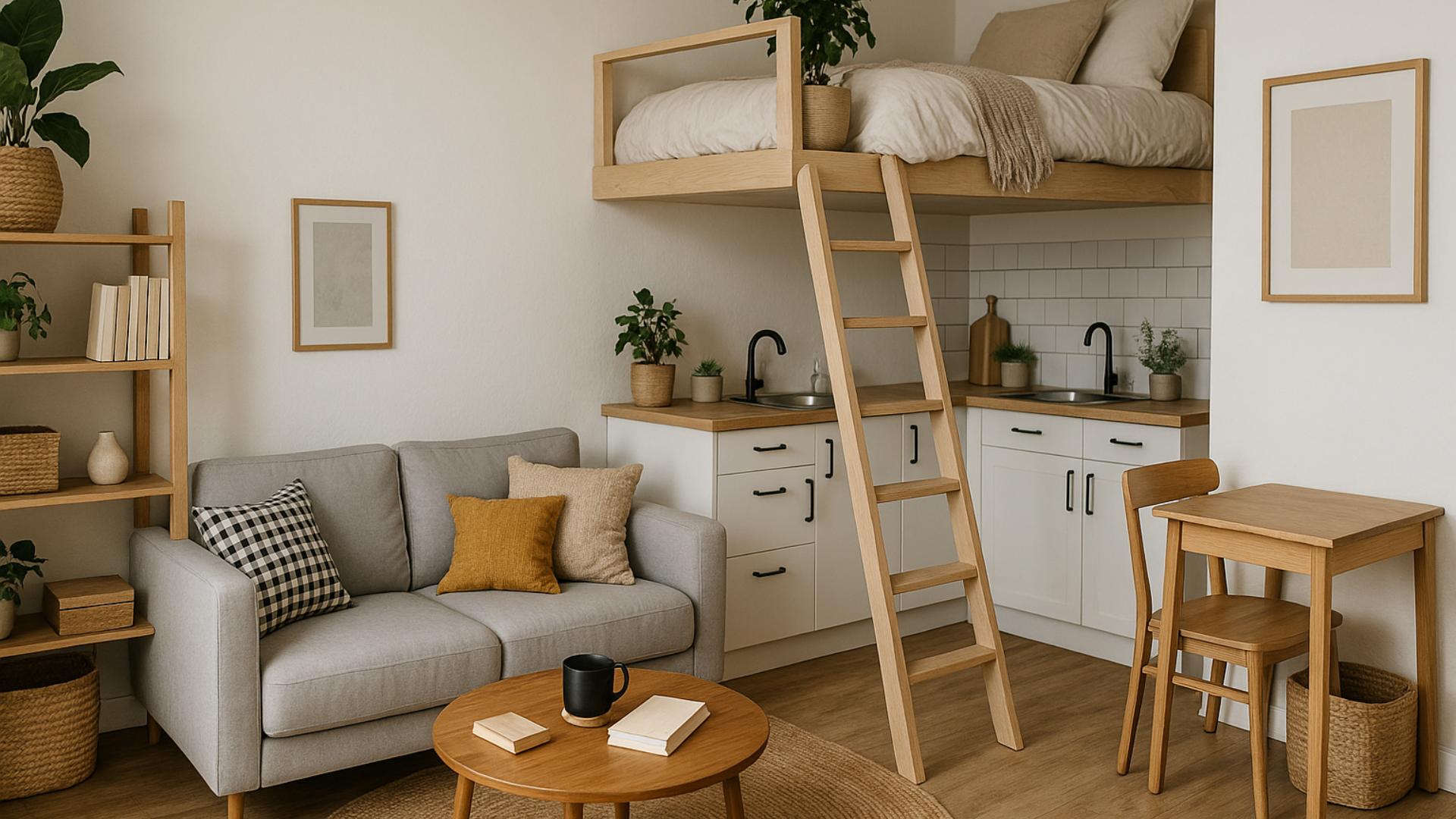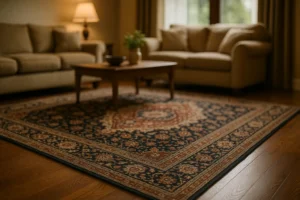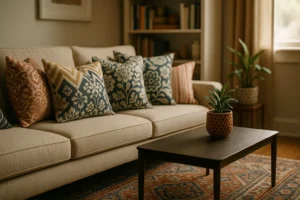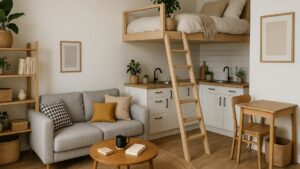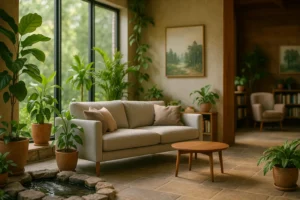How to Make a Room Feel Bigger with Design
In the world of interior design, one of the most compelling challenges is transforming a small space into one that feels open and airy. We’ve all experienced the frustration of a cramped room, where every piece of furniture seems to close in, making the room feel even more constricting. But what if we told you that with a few clever design tweaks, your small room could feel significantly bigger? Today, we’ll explore the art of maximizing space, sharing tried-and-true tips that will ensure your space feels light, bright, and inviting. Let’s delve into the magic of design and see how simple changes can make a monumental difference.
Light: The Catalyst for Spaciousness
Light, both natural and artificial, plays a pivotal role in creating the illusion of space. A room bathed in light automatically feels more expansive and welcoming. To effectively harness this element, we can employ a variety of strategies to transform even the most dimly lit room into a beacon of brightness.
Harnessing Natural Light
Start by analyzing the existing natural light your room receives. Maximize its potential by keeping windows unobstructed. Opt for sheer curtains that allow sunlight to filter through, filling the room with a soft, diffused glow.
Maximizing Artificial Light
In spaces where natural light is limited, layering different sources of artificial light is key. Consider a combination of overhead fixtures, floor lamps, and table lamps to eliminate shadows and brighten every corner. By placing light sources strategically, we can create the illusion of depth, making the room appear larger than it actually is.
Mirrors: Reflect and Amplify
Mirrors are the secret weapon in the quest to enlarge a space. By reflecting light, whether from a window or a strategically placed lamp, mirrors can double the perceived size of a room. A large mirror on one wall can work wonders, while smaller mirrors positioned around the room can collectively enhance both the light and the sense of space.
The Art of Furniture Selection
Choosing the right furniture for a small space is like piecing together a puzzle. Each item must not only serve a functional purpose but also contribute to the overall feeling of openness and harmony. The goal is to select furniture that offers utility without overwhelming the room.
Opt for Multi-functional Pieces
Furniture that serves multiple purposes is invaluable in a small space. A bed with storage drawers underneath or a coffee table that doubles as a desk can save space and reduce clutter. These pieces allow us to maintain a tidy environment, which is crucial for a room to feel more spacious.
Raise the Furniture Off the Floor
Selecting furniture with legs can give the illusion of more space by providing a clear line of sight under each piece. This trick works especially well with sofas and coffee tables. By lifting furniture off the ground, we can create the appearance of a larger floor area, contributing to a more open feel.
Maintain a Cohesive Design
A cohesive color palette simplifies the visual landscape of a room. By choosing furniture in neutral colors, we can create a seamless flow that feels less cluttered. This does not mean sacrificing personal style; rather, it means coordinating pieces to complement one another, enhancing the overall sense of continuity.
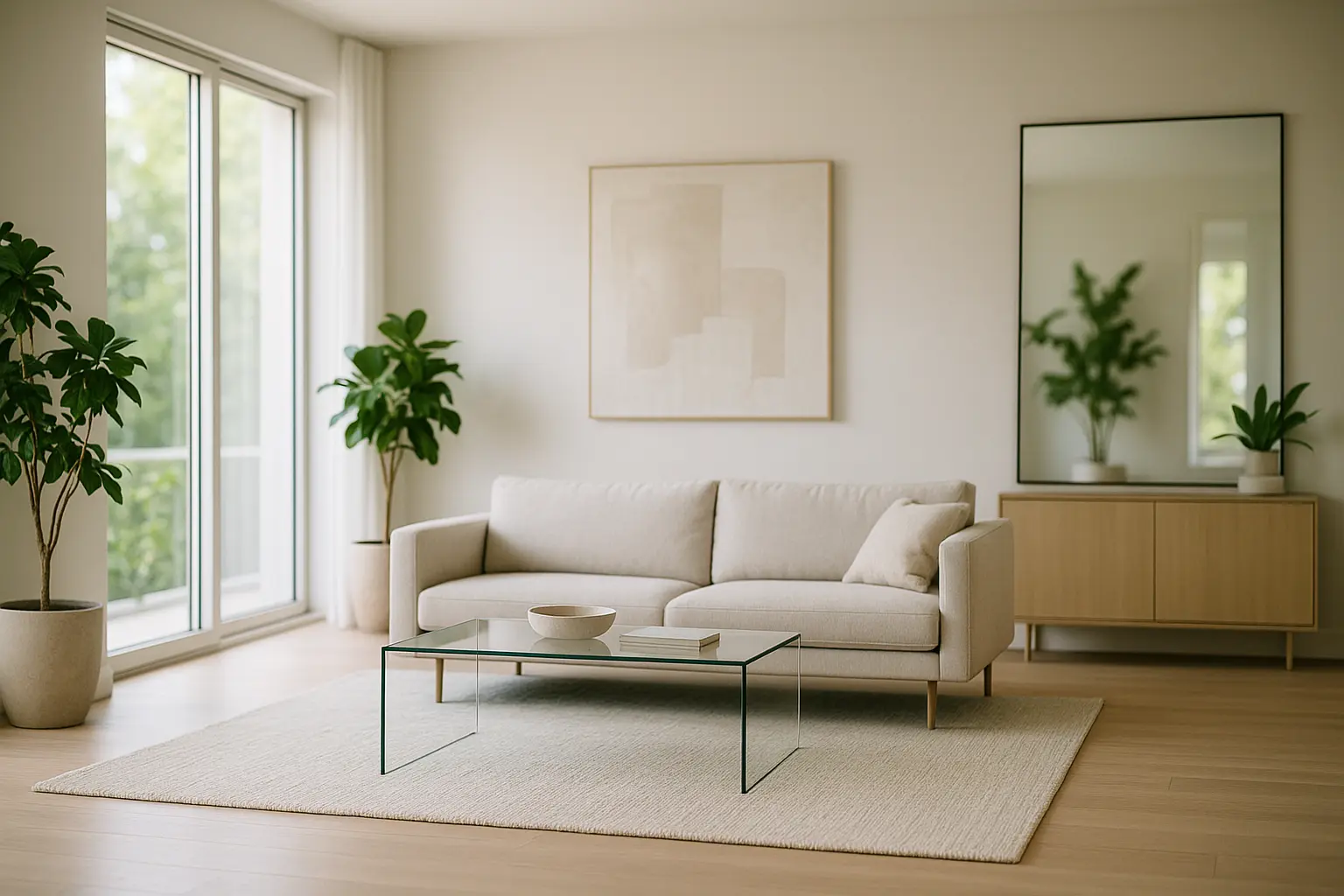
Color Schemes: The Secret Ingredient
The color palette of a room profoundly influences its overall perception. While bold and dark shades can lend an air of drama, they often close in a space, making it feel smaller. By selecting the right colors, we can open up a room and create a serene environment.
Embrace Lighter Colors
Lighter colors reflect more light than their darker counterparts, which is why they are excellent choices for small rooms. Whites, pastels, and soft neutrals can make a room feel open and airy. Painting walls and ceilings in lighter hues can also blur the boundaries between spaces, making them appear larger.
Accent Walls and Textures
To add depth without compromising on spaciousness, consider an accent wall in a lighter shade or with a subtle texture. This can create a focal point that adds interest without encroaching on space. Using textured finishes like linen wallpaper or matte paint can also add dimension without overpowering the room.
Consistent Use of Color
Consistency in color application extends beyond walls to include furniture, accessories, and artwork. By maintaining a unified palette, we can avoid visual clutter and ensure a harmonious look. Remember, a cohesive design is often the key to creating a sense of spaciousness.
Decorative Elements: Less is More
While it can be tempting to fill our rooms with decorative pieces that express our personality, restraint is crucial when working with limited space. Paring down on decor and being selective about items can maintain a clean, uncluttered environment.
Selective Wall Art
When it comes to wall decor, less is often more. Opt for a few key pieces that resonate with your personal style rather than overwhelming the room with numerous artworks. Favor large-scale pieces that draw the eye upwards, creating a sense of height and space.
Incorporate Greenery
Plants can bring life and vibrancy to a room without taking up much space. Choose tall, slender plants or hanging varieties to add a touch of nature, contributing to a sense of openness and tranquility.
Keep Surfaces Clear
Avoid overcrowding surfaces with knick-knacks. Instead, display a few select items that have meaning or significance. This approach not only highlights these pieces but also maintains a clearer, more open environment.
Functional Decor
Opt for decor that serves a purpose. A beautiful vase that doubles as a storage container or a decorative tray that organizes remotes and other small items can enhance the aesthetic without adding clutter.
Conclusion: The Power of Design
In our quest to make a room feel bigger, we’ve explored how the principles of light, furniture selection, color schemes, and decor can work in harmony to create a spacious feel. By thoughtfully applying these elements, we can transcend the limitations of size and transform our spaces into serene sanctuaries that invite relaxation and creativity.
Remember, the secret to making any space feel larger lies not in the square footage but in the choices we make. With a mindful approach to design, we can embrace our small spaces and make them work for us, ensuring they feel as welcoming and expansive as possible. Whether it’s through strategic use of light, clever furniture choices, or a well-curated color palette, the power of design is in our hands. Let’s reimagine our spaces and revel in their newfound spaciousness.
FAQ
How can color choices impact the perceived size of a room?
Lighter colors, such as whites, creams, and soft pastels, tend to make a room feel more open and airy. These hues reflect more light, creating a sense of space. Conversely, darker colors can make a room feel more enclosed or cozy.
What role do mirrors play in making a room appear larger?
Mirrors can significantly enhance the sense of space in a room by reflecting light and views. When strategically placed, they create an illusion of depth, making the room feel more expansive.
Are there specific furniture arrangements that help maximize space?
Yes, arranging furniture in a way that maximizes floor space and maintains clear pathways can make a room feel larger. Opt for multi-functional pieces and avoid blocking windows to allow natural light to flow freely.
How does the choice of flooring affect the room’s spaciousness?
Consistent flooring throughout the room and even extending into adjacent spaces can create a seamless look, making the room appear larger. Consider using large tiles or planks to further enhance this effect.
Can lighting influence the perception of a room’s size?
Absolutely. Layered lighting, including ambient, task, and accent lights, can make a room feel more open. Properly placed lighting can eliminate shadows and highlight various aspects of the room, contributing to a more spacious feel.
